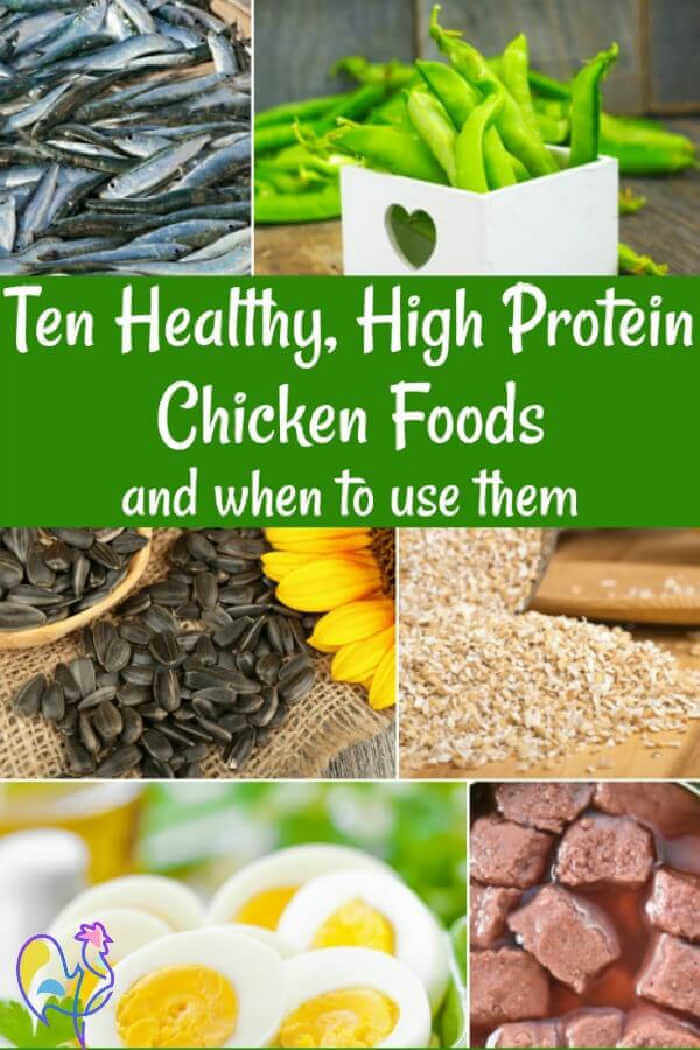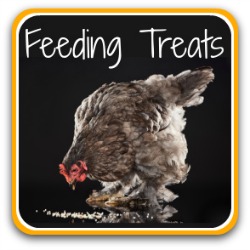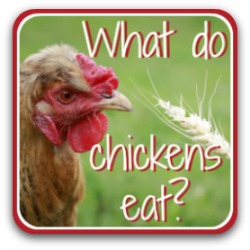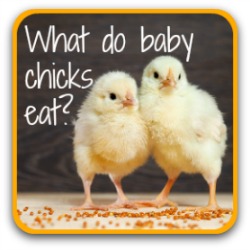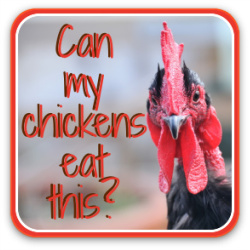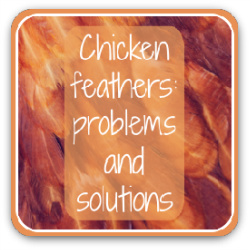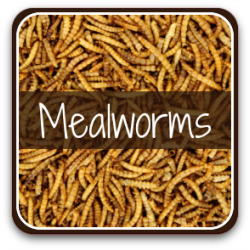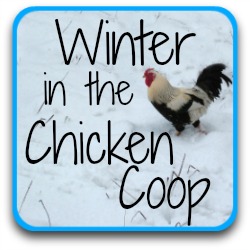Ten best high protein chicken foods for a healthy flock.
As autumn brings moulting and winter cold sets in, your hens sometimes need an extra boost. That’s when high protein chicken foods can make all the difference – helping them regrow feathers, stay warm, and recover from stress.
But it’s important to know when and how to offer these foods. Too much protein can do more harm than good. If your flock already has a good layer feed and ideally space to forage, treats should only be given in moderation and at the right times.
In this guide, I’ll share the ten best high protein foods for chickens, including when to use them, how much to give – and a few of my flock’s favourites.
🪶 Featherlight Takeaways.
Quick insights from this article – especially helpful if you need to quickly assess whether your flock needs a protein boost.
- Chickens don’t need high protein foods every day – only at certain times.
- They're particularly helpful during moulting, harsh winters, or after stressful events (such as a predator scare).
- Too much protein can cause health problems: do not overfeed!
- A good quality layer feed should always be the main food. Everything else, including high protein treats, should form no more than 10% of the flock's diet.
Please note: the foods are listed in order of most protein to least. Percentage values of protein content is given after each heading.
When do chickens need additional protein?
Extra protein is especially useful when hens are moulting, during hard winters, after stress (such as a predator scare), and for laying hens, particularly if you plan to use their eggs to hatch your own chicks.
High protein foods during moulting.
As autumn sets in, hens shed old feathers and grow new ones to make sure they're well prepared for the cold winter weather.
Because feathers are 85–90% protein, the chicken puts all its protein resources into feather-making. Egg-laying will slow down or stop and the hen can become listless and tired.
A little extra protein in their diet can really help at this point. It's a bit like us taking a vitamin boost.
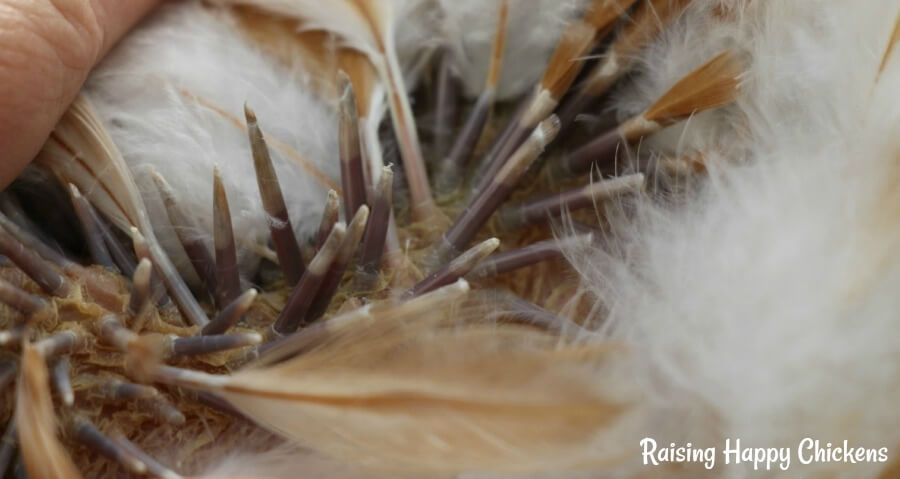 'Pin feathers' growing back on a moulting hen. At this point chickens need extra protein.
'Pin feathers' growing back on a moulting hen. At this point chickens need extra protein.
High protein foods in winter.
Cold weather can be hard on hens, especially if snow keeps them confined and stops them foraging for the bugs and greens which in summer provide a protein boost.
So during those harsher times, a little extra protein helps keep the flock strong and healthy until spring.
For full guidance on keeping hens safe and comfortable in winter, see my complete series on winter chicken care.
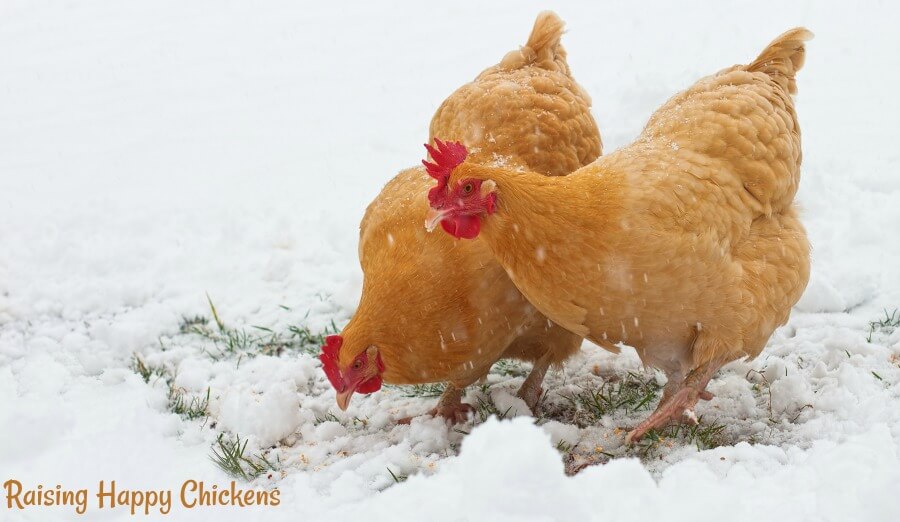

How much high protein food should you give?
These foods are treats, not a replacement for a good layer feed (affiliate link). They should make up no more than, at most, 10% of your flock's food intake.
Many are high in fat, and overweight hens are more likely to suffer health problems, which can in turn lead to diseases such as Sudden Chicken Death Syndrome.
As a rule of thumb, offer no more than a couple of handfuls of high protein foods between a dozen chickens, twice a week.
Having said that, high protein / low-fat foods like lentil sprouts can be fed more freely.
Where moderation is especially important, I’ve made it clear under each food heading.
Cooked eggs.
91% protein.
Eggs are one of the best high-protein foods you can give chickens – as long as they’re cooked first.
Raw eggs are risky: they can encourage egg-eating behaviour in the coop which is very difficult to stop. They contain less protein (about 51%) anyway.
But once cooked, the texture and smell are different, so chickens don’t recognise them as eggs.
Hard-boiled or scrambled (without milk or salt) are both excellent options. Chop them up for easy sharing and watch your flock go wild.
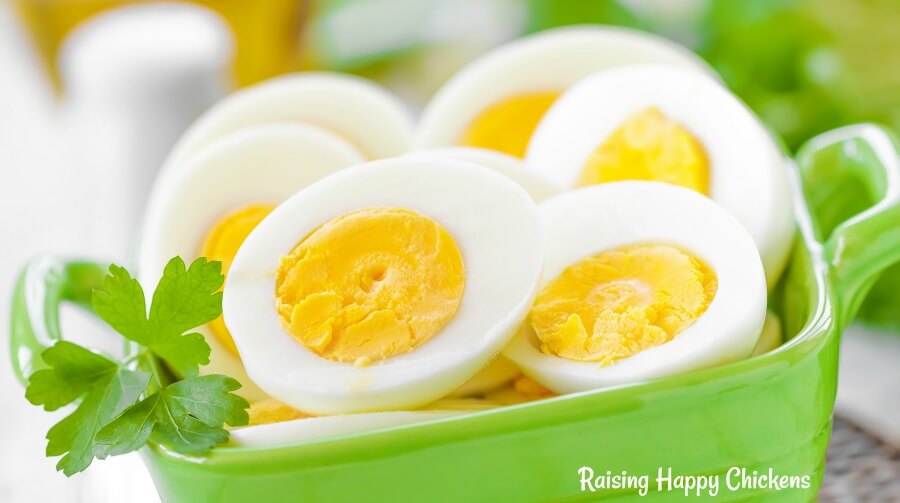
- Best options: hard-boiled eggs, scrambled eggs (without milk or salt).
- Avoid: raw eggs, any form of seasoned or processed eggs, particularly those with additional fat such as Scotch eggs or Eggs Benedict.
- For more information about the nutritional value of eggs, have a look at my quick guide.
- This plant is proven to lower the cholesterol content of eggs who knew?!
🐥 A note from my flock: try simply throwing chopped hard-boiled eggs into the run. Whenever I do that, it’s chaos – the whole flock races to grab the first bite!

Fish, or fish meal.
61 - 72% protein.
Fish is an excellent source of both protein and healthy Omega-3 oils.
Fresh fish is best if it's available to you. Prepare by mashing, or just slit them open. Small bones are safe; larger ones are usually left behind. In summer, try freezing large chunks and offer as a very occasional treat.
Tinned fish in water or sunflower oil is also fine, provided there’s no added salt.
Fish meal is another option, though it’s processed and less natural.
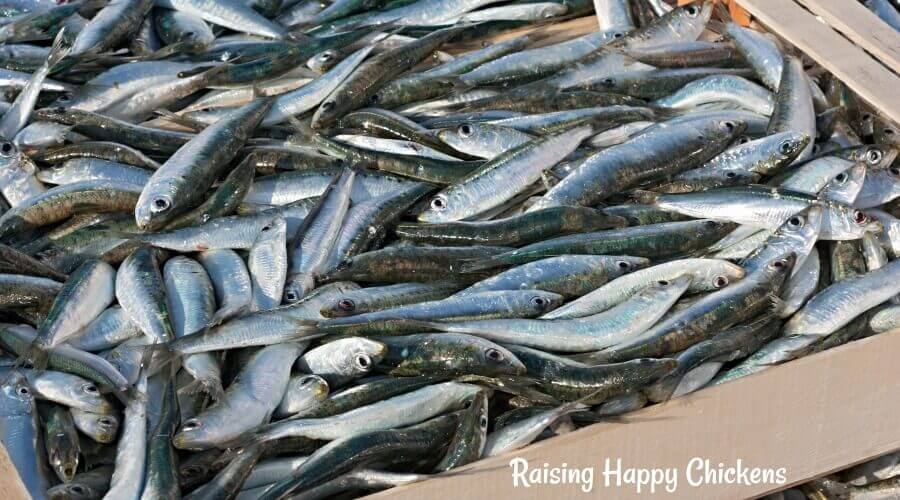
- Best options: sardines, tuna, mackerel, fresh if possible, or tinned in water or sunflower oils.
- Avoid salted fish, or anything processed such as tinned fish stored in a sauce. It's too high in sugars and salt.
- Myth busted: there's no evidence that feeding fish to chickens changes the taste of their eggs!
- For more detail, see my full guide on feeding fish to chickens.
🐥 A note from my flock: the first time I offered sardines, my chickens looked doubtful… until one brave hen tried them. Now, they clear the dish in minutes, entrails and all!

Mealworms.
49% protein live, around 36% dried.
Mealworms are one of the most popular high-protein treats for chickens with good reason. Flocks go wild for them!
They’re best given sparingly: just a few per chicken, a couple of times a week. Too many can add excess fat to the diet.
Scatter them around the run to encourage natural foraging, or mix into a chicken porridge or pumpkin treat for an extra boost.
Note: Mealworms are widely sold as wild bird food. However, in the UK and EU they’re not officially approved for chickens, due to hygiene concerns about how most are produced.
👉 For more details, including the regulations and safe alternatives, see my full guide to mealworms for chickens.
If you’re brave enough to raise your own, I’ve also shared the best "how to" video there.
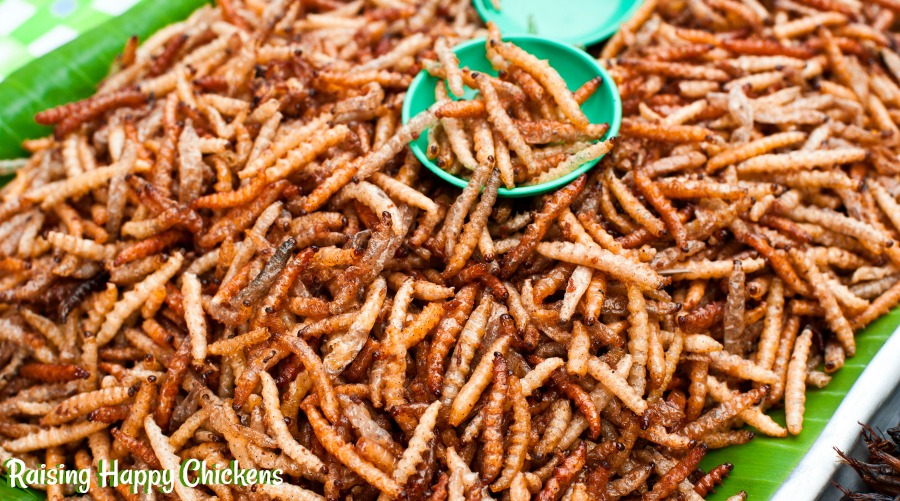
- Best options: live or dried mealworms, offered sparingly
- Avoid: overfeeding — they’re very rich
- Note: in the UK/EU, they are not approved for chickens (see full guide)
🐥 A note from my flock: I regularly scatter a handful of mealworms into the chicken run. Foraging for them helps keep the flock entertained and healthy.

Pumpkin seeds.
31 - 33% protein.
Pumpkin seeds are a seasonal favourite, especially in autumn when carving pumpkins leaves plenty of leftovers. Chickens love both the seeds and the flesh, and they’re rich in protein and antioxidants.
Always use fresh seeds, not packaged ones (which are usually salted). They lose nutrients after a couple of months, so don’t stockpile. Serve raw straight from the pumpkin, or lightly roast before offering.
Some keepers suggest pumpkin seeds work as a natural dewormer, but there’s no scientific evidence to support this.
For more ideas see my full guide to feeding pumpkins to chickens.
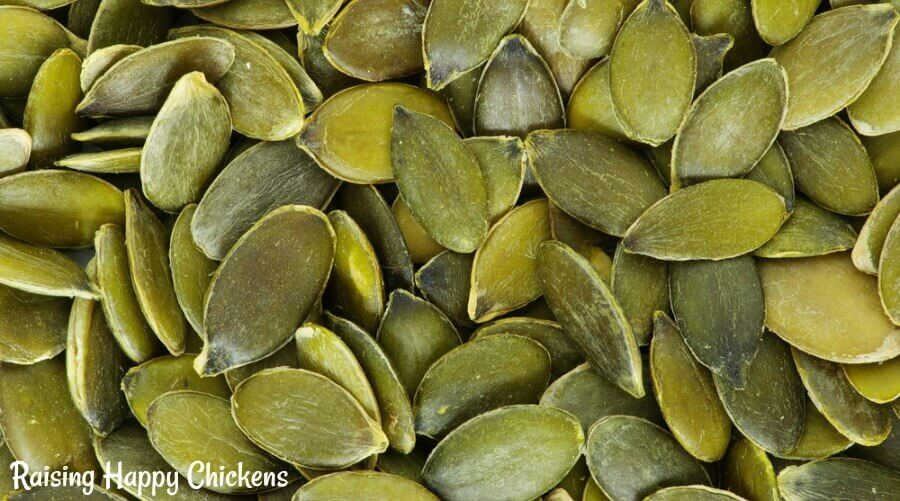
- Best options: fresh raw seeds, lightly roasted seeds, pumpkin flesh.
- Avoid: packaged / salted seeds, long-term storage (they lose nutritional value).
- Myth busted: pumpkin seeds are not a proven dewormer.
🐥 A note from my flock: my chickens love pumpkins so much that I have invented some special pumpkin treats for them.
Click here for my poultry pumpkin traybake, pumpkin pies and pumpkin cookies recipes.

Lentils.
26 - 30% protein.
Sprouted lentils are one of the healthiest high-protein foods for chickens. They’re inexpensive, low in fat, and easy to grow at home.
Although not quite as exciting to chickens as mealworms or eggs, lentil sprouts are still eaten eagerly and can be offered all year round.
Want to try sprouting for your flock? See my step-by-step guide to sprouting lentils for chickens, including other sprouts you can use.
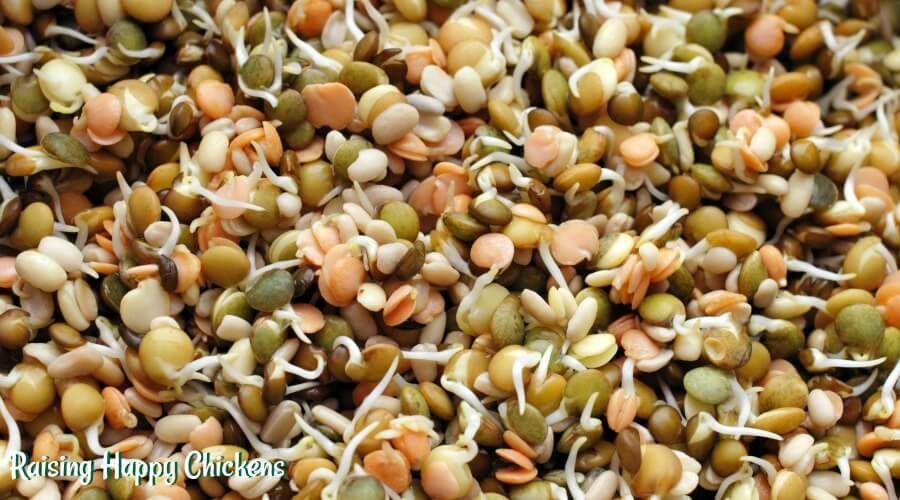
- Best options: home-sprouted lentils – they're a fresh food, and very low in fat.
- Avoid: dried lentils fed uncooked – these are too hard to digest.
- Bonus: sprouted lentils are great for humans too! Try them in a summer salad.
🐥 A note from my flock: my chickens aren't as keen on lentils, sprouted or not, as they are on other forms of protein.
But their health benefits are so great that I invented a special lentil-based treat recipe, which I feed warm during winter months. This, the flock loves!
Find more about the general health benefits of lentils for chickens, plus that recipe, here.

Cat food.
26 - 30% protein.
Chickens are omnivores and love meat, so it's no surprise that cat (or dog) food is one of their favourite high protein foods. Both kibble and tinned food are high in protein – but they're controversial as a chicken treat.
Why? Because they're highly processed. For that reason they should be given only on extra-special occasions.
For more on the pros and cons of feeding meat, including cat and dog food, to chickens, see my detailed article: "Can chickens eat meat?".
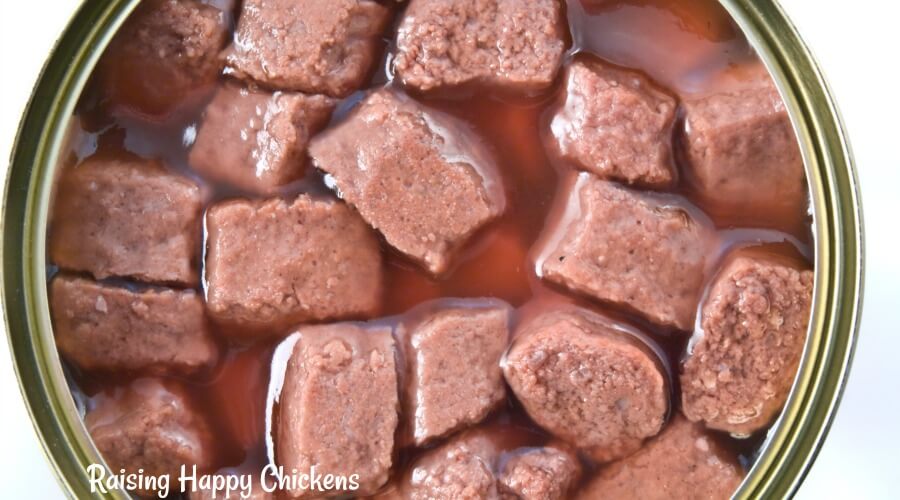
- Best options: small amounts of plain kibble or tinned cat food as a very occasional treat will not do any lasting damage.
- Avoid: feeding any kind of processed meat regularly. It contains too much fat, and quite often large amounts of salt and sugar. And, after all, cat and dog food are balanced for cats and dogs, not chickens.
🐥 A note from my flock: I allow my flock to peck at the remains of a cooked chicken carcass rather than give them processed meats. And, to make sure they eat their grain first, I feed treats in the afternoon, and take up anything left uneaten at roosting time to avoid attracting rodents.

Sunflower seeds.
26% protein.
Sunflower seeds are a great natural protein boost, especially in the autumn when the heads are heavy with ripe seeds. They’re also rich in disease-fighting phytochemicals.
Offer seeds dried, mix them into treat blocks – or best of all, grow sunflowers from seed in the spring and let your chickens peck the heads once ripe.
Gorgeous colour in summer, fabulous natural nutrition in winter!

- Best options: your own dried seeds, homemade treat blocks, whole sunflower heads.
- Avoid: salted packaged seeds.
- Bonus tip: grow your own for a double benefit: flowers in the summer; fresh, nutritious seeds in late summer right through the autumn.
Want the full details of how to grow, harvest and dry sunflowers and their seeds?

Garden peas.
23% protein.
Peas have been fed to poultry for generations and are a simple, safe, low fat way to add extra protein. Fresh, frozen, or home-grown are all good options.
Don't use canned peas though: they’re high in sugar, salt and additives. Frozen peas are often better than supermarket “fresh,” since they’re frozen quickly to preserve nutrients.
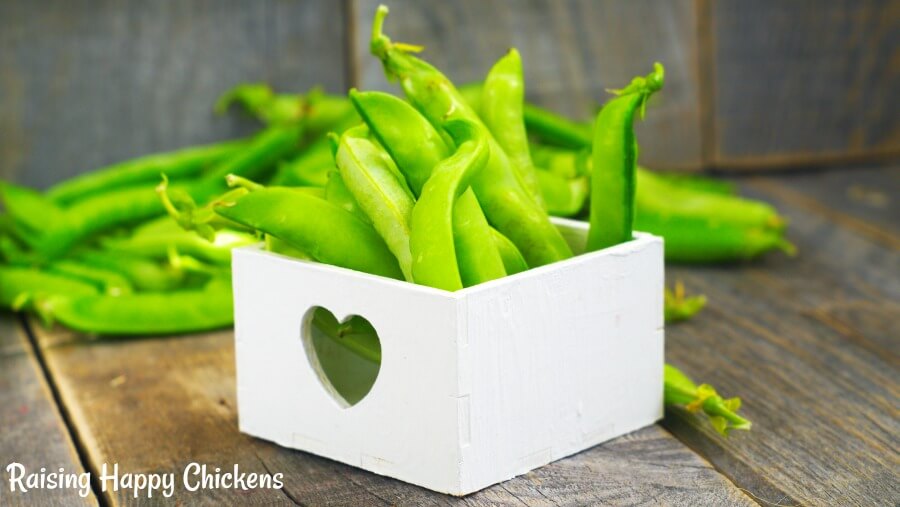
- Best options: fresh, frozen and home-grown peas are all excellent sources of protein.
- Avoid: canned peas (too salty, sugary ands often have additives); "mushy" peas (in the UK – too processed and often high in salt).
- Bonus tip: on hot days, scatter frozen peas in water bowls. You'll find the chickens peck them up like sweets, creating both a cool treat and a protein boost.
🐥 A note from my flock: for a favourite summer treat, feed peas mixed with other veggies, or combine them into a frozen treat block.

Parsley.
21% protein.
Parsley isn’t just a garnish for humans. It’s packed with protein, vitamins, and minerals that are a great boost for chickens’ immune systems.
Flat-leaved Italian parsley is especially nutritious, with a higher level of calcium and natural anti-carcinogens than the curly variety. And all parsley is very low in fat.
Some sources wrongly claim parsley is harmful to chickens, but it’s completely safe and very beneficial.
For full details, see my complete guide to how to grow and prepare parsley for chickens.

- Best options: fresh flat-leaved parsley, easily grown outside or on a sunny windowsill.
- Avoid: none: all types of parsley are safe and healthy for chickens.
🐥 A note from my flock: I grow parsley in pots in my chicken run and find that the flock will peck at it as they need it. I also mix into into any treats I make for them, adding protein without being obvious. A bit like getting kids to eat their greens...

Oats.
10 - 17% protein.
Oats aren’t the highest-protein food on this list, but they’re a versatile, healthy addition to a chicken’s diet. They provide protein along with calcium, iron, and soluble fibre.
They're also very useful in different recipes to add bulk, and bind together different ingredients.
Whole or rolled oats are best. Avoid "quick" or flavoured oats, which are processed and often high in sugar or salt.
Soaking oats before feeding makes them easier to digest, and helps keep chickens hydrated in hot summers or icy winters.

- Best options: whole or rolled oats, soaked or cooked into a "porridge" (see below)
- Avoid: quick oats, flavoured sweetened packets
🐥 A note from my flock: one of my flock's very favourite treats is a warm oat-based "porridge", which I feed them on cold winter days. I call it my "Poultry Protein Platter", and you'll find the recipe here.
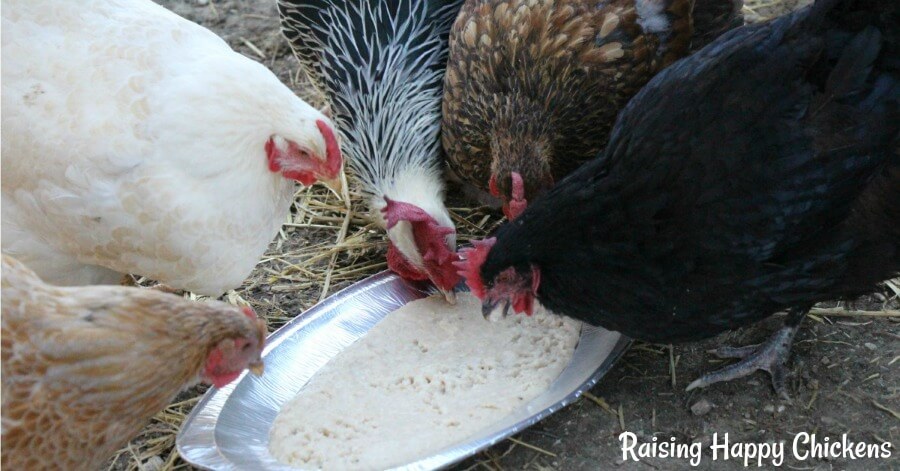 My flock adore the taste of "porridge" on a cold winter's morning.
My flock adore the taste of "porridge" on a cold winter's morning.
Commercially produced high protein powder for chickens.
If you don’t have time to grow or prepare natural high protein chicken foods, you can buy a commercial high-protein powder (affiliate link) as a booster.
They’re usually around 29% protein, so lower than many natural foods, and often bulked out with corn and additives to preserve their shelf life.
I prefer to feed naturally, but these products are useful in a busy home, and chickens generally enjoy it.
- Best use: sprinkle on feed as an occasional booster when natural protein is hard to provide
- Avoid: feeding as a regular addition to the diet. As with other high protein foods, feed only when their natural protein levels are depleted.
Frequently asked questions.
Can I feed high protein foods all year round?
Can I feed high protein foods all year round?
No. High-protein foods should be given only when chickens need an extra boost such as during moulting, harsh winters, or after stress. Overfeeding protein can lead to obesity and health problems.
Do chickens still need oyster shell when they're eating high protein foods?
Do chickens still need oyster shell when they're eating high protein foods?
Yes, oyster shell, grit and water are all necessary no matter which foods chickens eat.
How much high protein food should I give?
How much high protein food should I give?
Use moderation. As a guide, no more than a couple of handfuls shared between 10 to 12 chickens twice a week. Low-fat options like lentil sprouts can be given more often.
What percentage of protein should layer feed contain?
What percentage of protein should layer feed contain?
A good, balanced feed for adult chickens should contain between 16% and 20% protein. Additional protein should be fed only during times of stress (after a predator attack, for example), during moulting, or to help them deal with particularly harsh winters.
Are peanut butter and insects safe high protein chicken foods?
Are peanut butter and insects safe high protein chicken foods?
Peanut butter is too high in fat to be a healthy source of protein for chickens. Insects, though, are one of the best. Try black soldier fly larvae (affiliate link) which are particularly nutritious, and contain more calcium than mealworms.
Is it OK to feed eggs to chickens for extra protein?
Is it OK to feed eggs to chickens for extra protein?
Yes, eggs are one of the very best sources of protein – see this section of this article. However, always make sure the eggs are cooked (either scrambled or hard boiled), otherwise there's a high risk of encouraging egg eating in the flock.
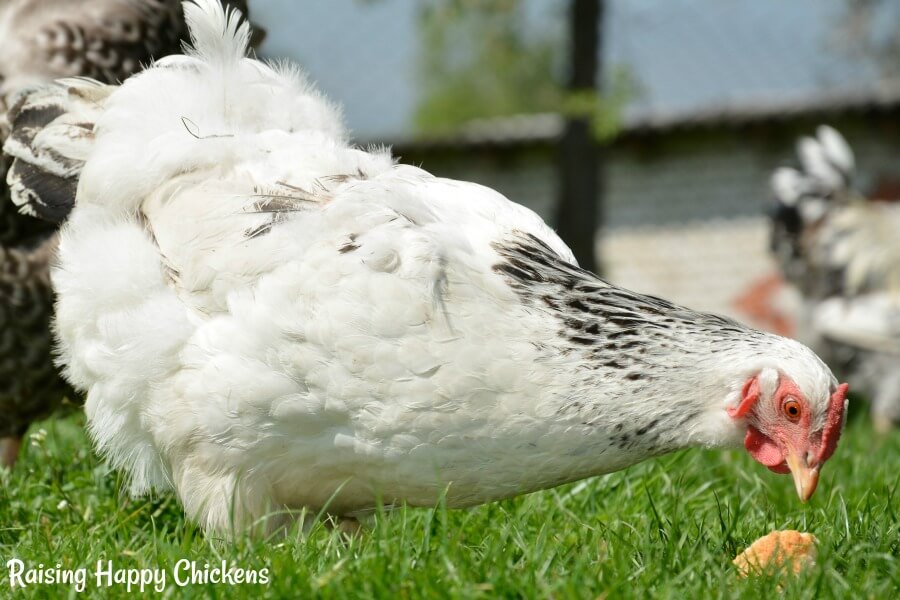 "Will it kill me?" Give your chickens time to get used to new high protein foods.
"Will it kill me?" Give your chickens time to get used to new high protein foods.More chicken food articles.
Sources.
A lot of "facts" you'll find on the internet are often people's individual views, based on inaccurate information repeated from poor quality sources.
The information I provide in this article and others is based not just on my own experience, but on evidenced facts from scientific, peer-reviewed research and books from highly respected and experienced poultry keepers such as Gail Damerow.
Some of the trusted sources I have used in this article are these.
Health Canada : 'Nutrient Value of some Common Foods'. March 2013.
Mayo Clinic : 'The Calorie and Protein Content of Common Foods'. 2012.
Mealworm.org : 'Mealworms - Recipes and Nutrition'. 2014.
National Academy Press : 'The Nutritional Requirements of Poultry'. 1994.
National Sunflower Association.
R. Hoenselaar; Pub. National Centre for Biotechnology Information, US National Library of Medicine : 'Saturated fat and cardiovascular disease: the discrepancy between the scientific literature and dietary advice'. August 2011.
European Feed Regulations.
Under current European and UK regulations, chickens must not be fed any food that has passed through a kitchen, whether that kitchen is domestic or commercial.
This rule applies to all backyard flocks, no matter how large or small — even if you don’t sell eggs or meat. It includes meats, vegetables, and all kitchen scraps.
In addition, the sale of dried mealworms for feeding poultry is prohibited, although these products are still sometimes found in shops labelled "for wild birds".
These rules exist to help prevent the spread of disease and ensure feed safety, particularly where imported ingredients may not meet UK or EU quality standards.
